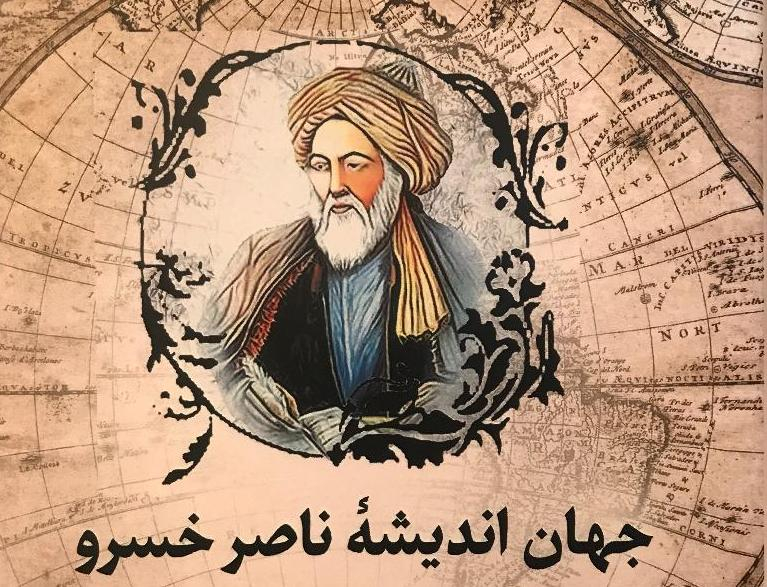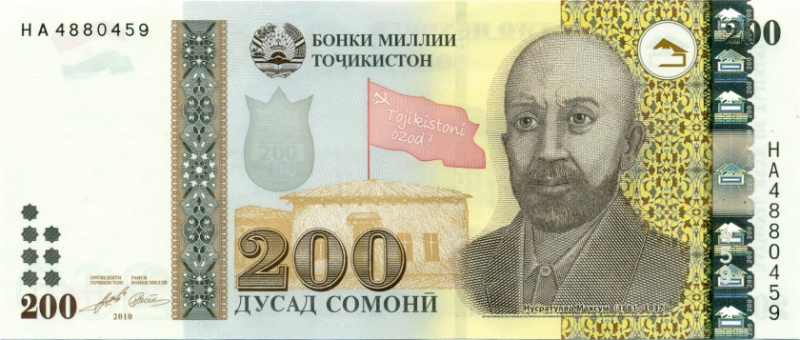Top 7 Most Important Historical Figures In Tajikistan
Each country will experience remarkable persons throughout its history who will fundamentally alter its perception, advance its material and spiritual culture ... read more...to a high state of development, and promote its civilization on the global stage and Tajkistan is not the exception. Let's explore the most important historical figures in Tajkistan with Topist!
-
One of the major figures of Tajik culture and wisdom as well as one of the most important historical figures in Tajikistan, Nosiri Khusrav Kubodiyoni (28 August 1004 - 1088) dedicated his entire life to self-knowledge, celebrating national pride, liberating foreigners from oppression, superstition, and other unpleasant events. He truly has the utmost respect for an intelligent and patriotic personality and pursued patriotism till the last breath of his life as a patriot, liberal, and humanitarian person. His valuable literary and scientific works include "Jome ul Hikmatain," "Kushoish va Rahoish," "Safarnoma," and "Devoni Ash'or," among others.
His early years were spent in the Tajik regions of Shahri Tusa, Tahti Kubod, Tahti Sangin, Kalai Mir, Kaykubodshakh, the prehistoric community of Kayonion, and ancient Bactria. His patriotic and independent beliefs were greatly influenced by his love of his ancestral land. He relished the originality of his native language and the great culture of his people as he developed his inherent poetic skill in the literary school of Rudaki and other Samanid Dynasty speakers. Both Firdousi and Nosiri Khusrav commended his blogging and knowledge. In the writings of this great thinker, wisdom is equated with belief, religion, chastity, and purity. He views man as the ultimate object of the universe's design and views wisdom and knowledge as the primary tools for achieving self-awareness in humans.

Photo: mfa.tj 
Photo: ASIA - plus -
The noble Tajik people went on an astonishing national and cultural resurgence a millennium ago, led by the great leader Ismoil Somoni, and accomplished a priceless and renowned historical success. This outstanding statesman gave art and improvement considerable attention, along with life and human welfare improvements, urban, scientific, and cultural development. Ismoil Somoni showed dedication to the cornerstone of the Aryan state, which is the state's obligation to create the conditions essential for the nation to advance.
Somoni, who was born in the Ferghana Valley, took a very well-traveled route. He came from a line of kings, but his brother took the throne instead. He assumed control, just like other good ruthless military leaders of the era. Although it went against what was considered normal at the time, Somoni kept his brother alive and let him continue to serve as a symbolic leader. From Bukhara, he expanded his influence by fighting into contemporary Afghanistan and eventually entering northern Iran. To fend off Turkish incursions that sought to restore Turkic Shia hegemony over Central Asia was one of the causes for this expansion. Central Asia was to be under Sunni Iranian hegemony for as long as Somoni ruled. Naturally, like with many great stories of empire, Somoni's heirs were unable to maintain the Samanid Khanate for very long, and it quickly fell apart.

Photo: iranhistorystories.blogfa.com 
Photo: TravelHK -
Sadriddin Ayni, a Tajik intellectual who created poetry, literature, journalism, history, and lexicography, lived from 15 April 1878 to 15 July 1954. He is well-liked as one of the most significant authors in Tajikistan's history and the nation's national poet. He is also regarded as one of the most important historical figures in Tajikistan.
Sadriddin Aini belonged to the Jadids, a group of enlighteners. His journey into education begins when he actively participates in setting up the first new-method schools in Bukhara for Tajik children. He also creates textbooks, poetry, and stories for them, arguing for secular knowledge in opposition to traditional Muslim theology. He backed the emirate's revolution and the establishment of the Bukhara People's Soviet Republic in 1920. Ayni started working as a writer for the Samarkand-based division of the Tajik State Publishing House on June 15, 1926.
In 1934, at the All-Union Congress of Writers, he was elected to the Board of the Union of Writers of the USSR in addition to being elected to the Central Executive Committee of the Tajik Socialist Republic, which was established in 1929. S. Ayni was frequently chosen to serve as a council member for the cities of Dushanbe and Samarkand, as well as the Supreme Soviet of the Tajik SSR twice (1937, 1947). In 1940, S. Ayni received recognition for his outstanding contributions to the field of literary criticism by being named an Honored Scientist of the Tajik SSR.

Photo: Goodreads 
Photo: Wikipedia -
Bobodzhan Gafurov was a Soviet statesman, political figure, historian, and the first secretary of the Communist Party of Tajikistan's Central Committee (1946–1956). He was also the head of the Institute of Oriental Studies at the USSR Academy of Sciences, a doctor of historical sciences, and an academician of the academy (1968). Director of the Academy of Sciences of the USSR's Institute of Oriental Studies since 1956. He made a name for himself as an administrator who handled issues with caution and balance, "an active and capable organizer" (IM Dyakonov), and "Easterner" (FA Toder).
Gafurov's tenure as director is regarded by V.M. Alpatov has the best time in the institute's history. Under Gafurov, a large number of young employees including former repressed, demobilized military personnel appeared at the institute, a unique linguistic structure, the Department of Languages, was established for the first time, Soviet orientalists began traveling to the countries they were studying, and the Publishing House of Oriental Literature was established. He received six Lenin Orders, the Red Banner of Labor Order, and decorations. In Tajikistan's Leninabad region, a city originally known as Sovetobad was given his name in 1978. He is one of Tajikistan's six national heroes (posthumously). The gallery of directors of the Institute of Oriental Studies of the Russian Academy of Sciences also houses Gafurov's image, which is woven into a carpet.

Photo: Encyclopedia Iranica 
Photo: Wikipedia -
A full member (academician) of the Tajik Academy of Sciences, a member of the Central Committee of the Communist Party of Tajikistan, and a member of the Union of Soviet Writers, Mirzo Tursunzoda (2 May 1911 – 24 September 1977) was a significant Tajik and Soviet poet as well as a well-known political figure. Tursunzoda has been promoted to the status of Tajik Hero today.
He is a well-known public personality and statesman, a deputy of the USSR Armed Forces, a member of the Communist Party of Tajikistan's Central Committee, the head of the Soviet Committee for Solidarity with Asian and African Countries, and a member of the Soviet Peace Committee and so on. He wrote in Tajik and Russian. Nearly all of the poet's works have been translated into Russian; they have also been published numerous times in republican and Union-wide printed media, in literary collections, and in standalone books. Numerous works by Russian and USSR writers, including those by A. Pushkin, T. G. Shevchenko, N. A. Nekrasov, Dzhambul, Shota Rustaveli, and Sh., were translated by him into Tajik. Zulfiya, R. Rashidov, and others.
In Dushanbe, he passed away on September 24, 1977. The 100th anniversary of Mirzo Tursun-Zade was commemorated in Tajikistan and other countries in 2011 as per a resolution made by UNESCO. That's all about the fifth most important historical figures in Tajikistan we want to mention.

Photo: asiaplustj.info 
Photo: Wikimedia Commons -
Nusratullo Maksum, commonly known as Nusratullo Lutfullayev, was a Tajik Soviet politician who lived from 1 July 1881 until 1 November 1937. The Order of the Red Banner was conferred upon him. He represented the Tajik Soviet Socialist Republic on the Central Executive Committee of the Soviet Union from 16 December 1926 to 28 December 1933. During the Great Purge, he received a firing squad death sentence. Maksum appeared on the 200 Tajikistani somoni currency following Tajikistan's independence from the Soviet Union.
He was chosen as one of the Chairmen of the USSR's Central Executive Committee after Tajikistan became a union republic (1931-1934). At a meeting of the Political Beaurou of the Central Committee of the All-Union Communist Party of Bolsheviks on December 5, 1933, the moderate stance of the Tajik leadership toward the rich farmers during the collectivization period was acknowledged as false. This resolution was followed by the dismissal of Abdurrahim Khodzhibaev and Maksum from their positions in the SNK SSR for "anti-party and in many cases anti-Soviet" policy at the fourth emergency session of the Central Executive Committee of the Tajik December SSR (27 1933).
In order to attend the All-Union Planning Academy, Maksum was dispatched to Moscow. Nusratullo Maksum was also posthumously restored by the Resolution of the Presidium of the Supreme Soviet of the USSR dated June 26, 1964. E. Rahmon was posthumously given the title "Hero of Tajikistan" by order of the president of the country (09.09.2006).

Photo: Wikipedia 
Photo: TopTJ.com -
The last name in the list of the most important historical figures in Tajikistan is Shirinsho Shotemur. Shirinsho Shotemur, a well-known Tajik politician who lived from 1 December 1899 to 27 October 1937, made a significant impact on the early history of Soviet Tajikistan and played a key role in the creation of the Tajik Soviet Socialist Republic. He started pursuing a political career in 1921 and was then assigned to the political-military team that was deployed back to the Pamirs. He served as an instructor for the national minority division of the Central Committee of the Communist Party of Tajikistan from 1923 to 1924. He oversaw the Tajik communist section at the same time.
Shirinsho Shotemur held a number of high-ranking roles in both the communist party and the Tajik government throughout his lifetime. Shotemur was detained in Moscow in 1937 after being accused of belonging to an anti-Soviet nationalist group. Later that year, Shotemur was given a death sentence by the Military Board of the Supreme Court of the USSR. On October 27, 1937, he was put to death. Shotemur was posthumously pardoned by the Military Board of the Supreme Court of the USSR in 1956.
One of the key figures in the 1924 establishment of the Tajik Autonomous Soviet Socialist Republic within the Uzbek Soviet Socialist Republic was Shirinsho Shotemur. Shirinsho Shotemur successfully pushed for the inclusion of Sughd Province in the Tajik ASSR in 1929, the same year he started Tajikistan's withdrawal from the Uzbek SSR and the creation of the new Tajik Soviet Socialist Republic. Shotemur served as the Tajik ASSR's representative in the Uzbek SSR as of 1927. Both during his lifetime and after his passing, Shirinsho Shotemur received honorary state awards, including ones from the Republic of Tajikistan in 1999 and 2006.

Photo: zarowadk.ru 
Photo: Wikipedia




























